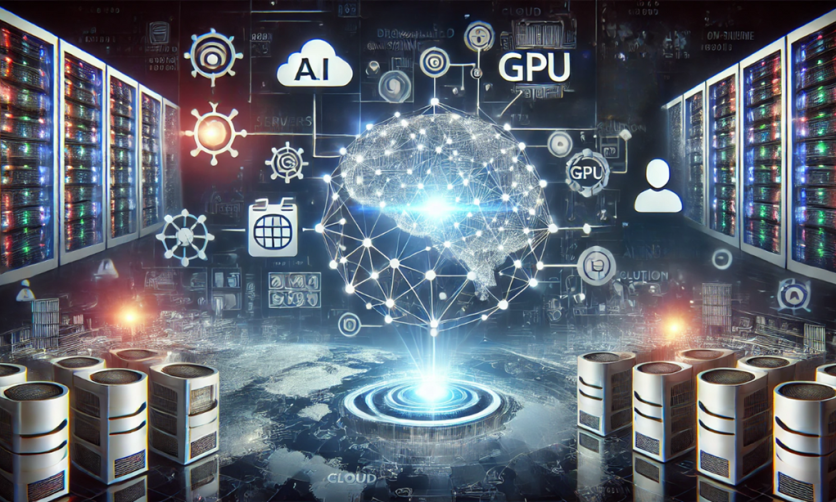
In recent years, a growing number of firms have sought out ways to harness the power of AI while minimizing the costs and complexities associated with this burgeoning technology. That's presented companies with a tedious task, as the cost of the computational power required to train the models is doubling every nine months.
A flurry of firms have entered the AI race, and many are just looking for the best ways to utilize the torrent of new tools to enhance their workflows and increase efficiency to stay competitive. However, without a firm grip on the costs associated with AI, especially compute infrastructure, companies can easily blow their budget without the efficiency returns they hoped for.
Searching for Solutions. Now, companies are putting their hat in the ring to attempt to solve this continually growing problem for enterprises and creative solutions are desperately needed. NeurochainAI is one firm that is reshaping the AI infrastructure landscape thanks to its innovative compute network optimization solution.
Instead of being considered just another orchestration tool, the solution presents a unique routing and optimization foundation, delivering an unparalleled level of efficiency and cost-effectiveness to existing AI compute infrastructures—particularly those being leveraged by Web2 companies.
At the heart of NeurochainAI's aforementioned offering is the Inference Routing Solution (IRS), a digital module that goes beyond traditional cloud computing and orchestration tools. Unlike existing solutions that rely on virtualization and pre-assigned GPU clusters, it works in a manner that closely resembles the blockchain, wherein the entire network can dynamically pick up and execute AI compute tasks, allowing for infinite scalability and reliability.
A Technical Outlook. From the outside looking in, the IRS operates on three key levels to optimize monthly AI inference costs. First and foremost, it employs an AI model optimization framework (using quantization), which reduces the precision of numbers in neural networks without sacrificing accuracy. This results in smaller, faster models that use less computational power while maintaining performance levels.
Secondly, the software acts as a combination of a load balancer and network orchestrator, monitoring GPU availability in relation to the system's existing AI tasks and optimizing the assignment of these tasks based on optimal execution. Such a routing methodology allows multiple AI models to run efficiently on a single GPU, dramatically reducing the total number of processing units required and, consequently, infrastructure costs.
NeurochainAI also provides clients with infrastructure set-up analysis and consultation, as well as reviews and suggestions for ways to optimize existing infrastructure composition to maximize the benefits delivered by the IRS.
Transforming Web2 for Web2 companies. The implications of this technology are profound, especially since we live in an era where AI is becoming increasingly critical to business operations. In fact, it is estimated that approximately 40% of companies across the globe are actively using AI in their operations, while another 42% are in the process of exploring the potential applications of AI in their existing systems.
In this context, NeurochainAI's solution addresses one of the most significant barriers to AI adoption: the steep costs associated with AI computing infrastructure. By potentially reducing these costs by up to 68%, the firm is making this technology accessible to a broader range of businesses (ranging from startups to established enterprises).
The flexibility of NeurochainAI's solution is particularly appealing to Web2 companies as the IRS can be implemented on top of existing infrastructure in two ways: as a fully managed service where NeurochainAI handles implementation, maintenance, and monitoring or as a self-managed service where companies receive endpoints and instructions to run compute nodes themselves.
Another significant advantage for Web2 companies is the compatibility of the solution with popular open-source AI models like Mistral, Vicuna, Llama, and Flux, ensuring that businesses can leverage their existing AI investments while benefiting from the IRS' optimization capabilities.
The impact of NeurochainAI's solution ranges well beyond the fact that it can help save users some dollars. By optimizing their native AI infrastructures, Web2 companies can accelerate their AI initiatives, bringing products and services to the market faster.
Getting Google's Attention. This cutting-edge approach has not gone unnoticed. NeurochainAI's innovation was recently recognized by Google, leading to its acceptance into the Google AI startup program. Google is tapping into NeurochainAI to provide its Distributed Inference Network (DIN) and Inference Routing Solution to companies building on Google Cloud. By integrating with Google Cloud's AI ecosystem, Google has recognized how NeurochainAI can help enterprises optimize their AI compute infrastructure costs, driving accessibility and affordability for organizations of all sizes.
Exploring the Future of AI Infrastructure. In recent months, NeurochainAI has fostered a decentralized AI as a Service (DAIAS) approach that can revamp the way in which AI applications are developed and deployed. This layered arrangement includes a consumer-grade GPU Decentralized Physical Infrastructure Network (DePIN), a data layer for community-powered data collection and validation, and a dApp layer with an AI model marketplace.
Such an approach dramatically reduces development time for AI applications (to just 5–9 hours), especially when compared to traditional methods, which can take up to 120 hours—a staggering 25x speed increase.
The AI market will only continue its head-spinning growth, projected to reach $223 billion by 2030. Solutions like NeurochainAI are being recognized by the biggest players in tech, including Google, as they see the crucial role it will play in democratizing AI.
ⓒ 2025 TECHTIMES.com All rights reserved. Do not reproduce without permission.





